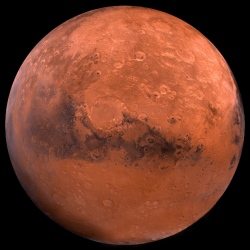
Soil that has been photographed deep in a crater dating to some 3.7 billion years ago contains evidence that Mars was once much warmer and wetter, says University of Oregon geologist Gregory Retallack, based on images and data captured by the rover Curiosity.
NASA rovers have shown Martian landscapes littered with loose rocks from impacts or layered by catastrophic floods, rather than the smooth contours of soils that soften landscapes on Earth. However, recent images from Curiosity from the impact Gale Crater, Retallack said, reveal Earth-like soil profiles with cracked surfaces lined with sulfate, ellipsoidal hollows and concentrations of sulfate comparable with soils in Antarctic Dry Valleys and Chile’s Atacama Desert.
His analyses appear in a paper placed online this week by the journal Geology in advance of print in the September issue of the world’s top-ranked journal in the field. Retallack, the paper’s lone author, studied mineral and chemical data published by researchers closely tied with the Curiosity mission.
Retallack, professor of geological sciences and co-director of paleontology research at the UO Museum of Natural and Cultural History, is an internationally known expert on the recognition of paleosols, ancient fossilized soils contained in rocks.
